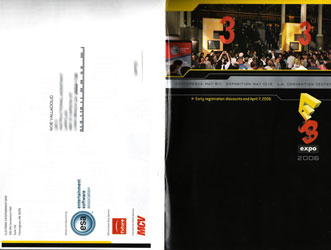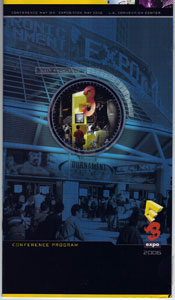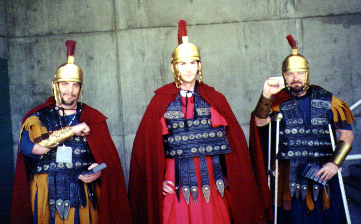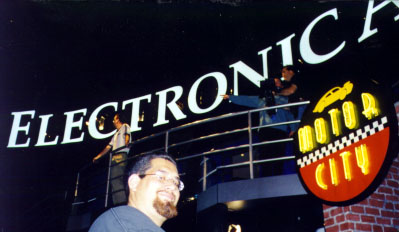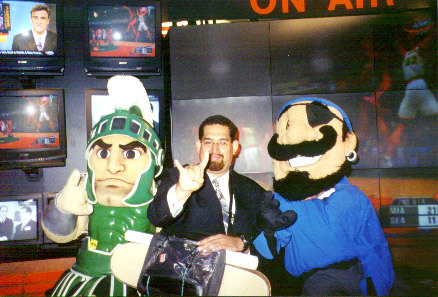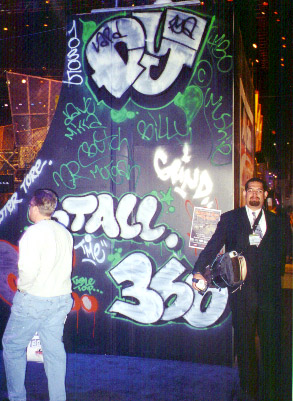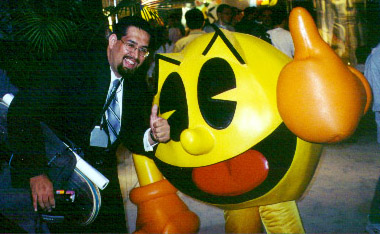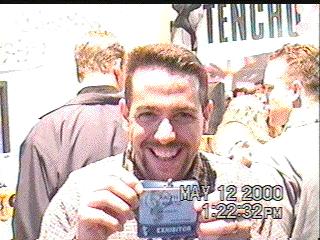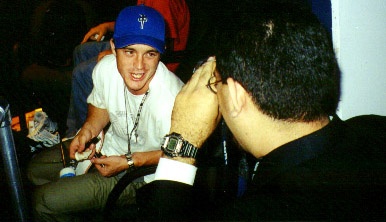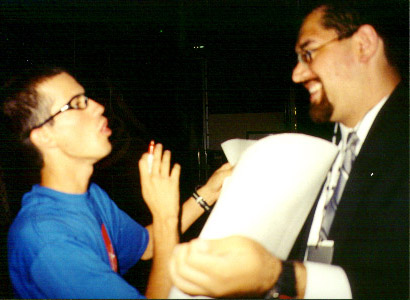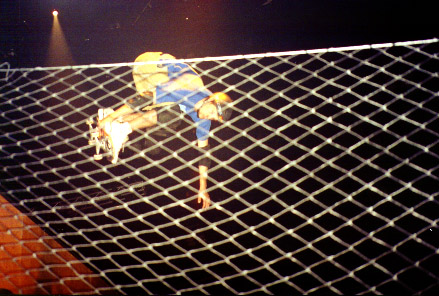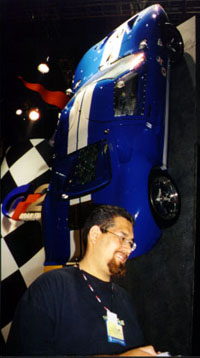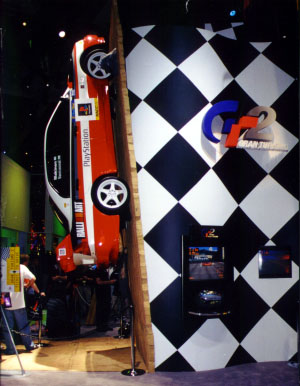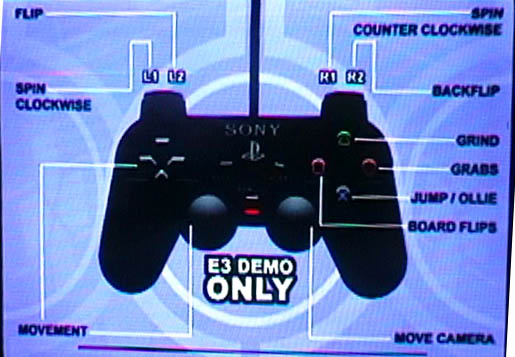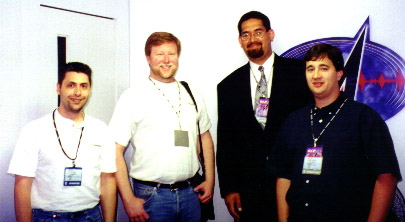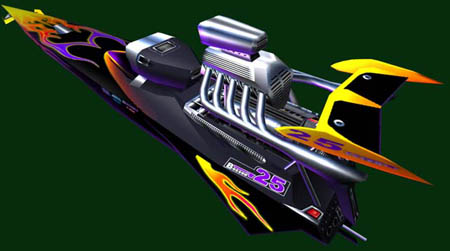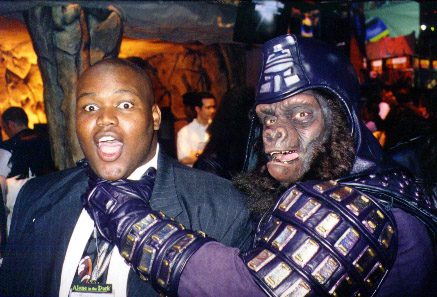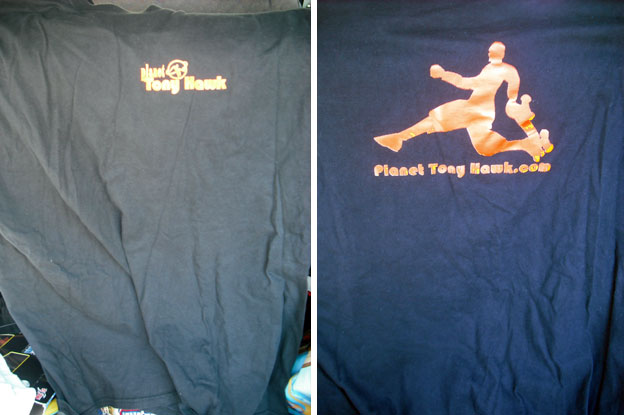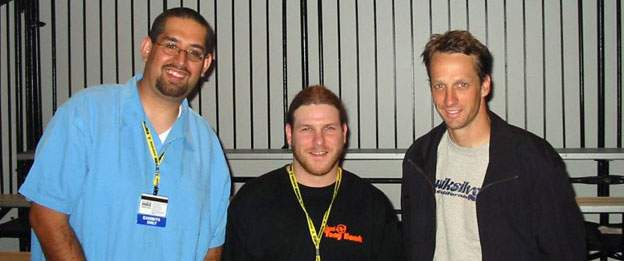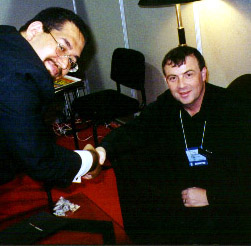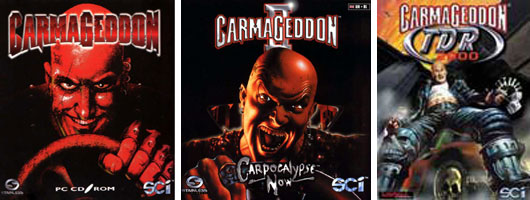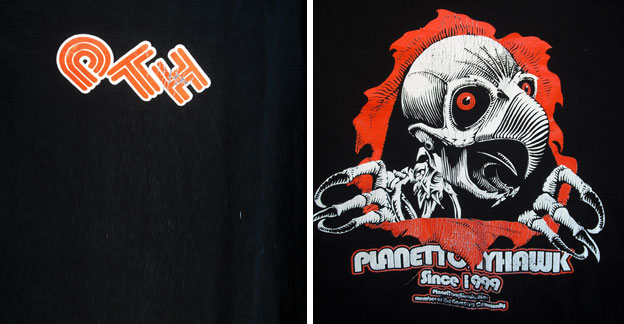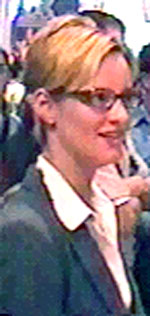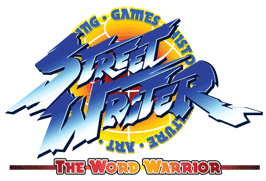
Hello friends, today is a special day. This month we are celebrating Arcadia magazine's 10th Anniversary! Today I will also be celebrating the legacy of my favorite Japanese gaming magazine, Gamest. While this doesn't mean much to the majority of the visitors here, Arcadia represents a very important connection to gaming history. To use a corny phrase, it is one of the few magazines that keeps its fingers on the pulse of videogaming. There are many magazines that can claim to be genuine but Arcadia has a focus on the arcade industry. After 10 years following a supposedly "dead" industry Arcadia has shown that the market has never been more diverse and exciting. Arcadia is the spiritual successor to Gamest magazine, considered to be the best arcade gaming magazine of the 90's. Many of the same writers, artists and editors that contributed to the original Gamest, started up Arcadia when publisher Shinseisha went belly-up in 1999.
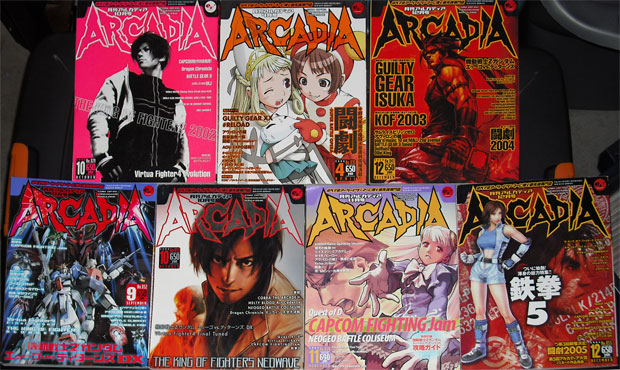
I cannot say that I have been following Arcadia all 10 years. I only found out about it in 2002, three years after getting my last issue of Gamest. I collected Arcadia on and off for a few years and then finally got around to getting a subscription back in 2004 - 2005. I haven't missed an issue since. So what makes this magazine so special? Why do I have such fond memories of Gamest when many great magazines, like EGM and Next Generation, have also come and gone?
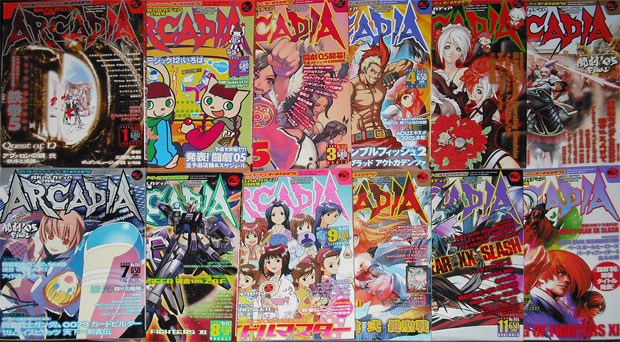
To be fair I do have my fair share of other videogame magazines. Like many of you I started on EGM back in the day. Sadly I ended up throwing away the first 150 issues or so because of water damage. I grew up on the insight and wit of people like Ed Semrad, Martin Alessi, Sushi-X and the Quarterman. Throwing away those classics was a heartbreaker, believe me but I was fortunate enough to have discovered Japanese gaming magazines in the early 90's. My friends and brothers learned that the real industry standard was the Weekly Famitsu. We would make treks to Japanese bookstores in Downtown LA. The same stores that we had discovered Dragon Ball Z also taught us to appreciate the nuances in Japanese gaming mags.

I was amazed that Famitsu could publish a magazine twice as thick as EGM every week. Writers and editors worked in shifts and created content at a manic pace. Perhaps that is why I write as often as I do, they created an example of how tireless game journalists had to remain. I rarely had money to buy an issue but poured over them every chance I could. I did the same for the dozens of other arcade, PC and console mags that came out in the 90's. A few of these magazines I still have and take good care of. They are all like time capsules. You can learn a lot about the gaming scene, hardware evolution, artistic direction and publishing strategy by going through these magazines.

It wasn't until I discovered Gamest that my love for gaming mags really took off. I had gotten my first issue of Gamest in 93. I was of course a fan of fighting games and wanted to see the latest happenings from Japan. My main motivation was to score exclusive art that never seemed to be printed in any western mag. Gamest delivered that and much more. It was a primer on game journalism from a Japanese POV. The magazine was loaded with highly detailed previews and features, on occasion some fantastic posters as well. High scores and tournaments were covered, while fan art and letters got a few pages. All of that was very similar to American magazines. The differences were more intriguing.

The writers would review fan manga or doujin inspired by game characters. The idea of an industry that supported fan work was fascinating. Try publishing a comic dedicated to the X-Men without Marvel's permission and see what happens. Advertisers ranged from developers and publishers to arcades and game stores, including those that sold arcade boards and joysticks. Gamest also ran special columns for developers. Yoshiki Okamoto from Capcom had his own section to talk about the happenings at the studio and get readers hyped on upcoming games.
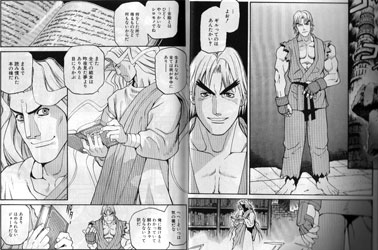
Manga serials, like Sakura Ganbare and Ryu Final, would get featured in the magazine, as well as the sister manga titled Gamest Comics. Manga artist
Mine Yoshizaki even created a mascot character for Gamest named Minty, her adventures were told over four-panel gag comics. He also contributed art for the magazine for features that lacked official character pieces. Shinseisha was not content publishing printed material. They had a goods section that featured telephone cards (before trading cards became hot), dinnerware, posters and even clothing based on popular games. In the new year all of the studios would send cards to be published bearing wishes to the magazine and readers. Some of the rarest game art turns up in these official pieces. Can you imagine how different the arcade industry would have been in the USA if they had seen the same amount of support from the magazines?

Gamest was very good at setting the standard. Unfortunately they were not perfect. A look at their covers through the 90's showed some of their short-sightedness. Almost all of the covers and features from that era were based on fighting games. While they were hot in the 90's they weren't the only viable genre in arcades. Shinseisha had stretched itself too thin and when the publishing industry felt a recession they closed shop. Despite the popularity of their merchandise, mooks (strategy books), magazine and manga's, the publisher could not stay afloat. When they shut down in 1999 it was the end of an era and I was more heartbroken then than when EGM closed its doors.
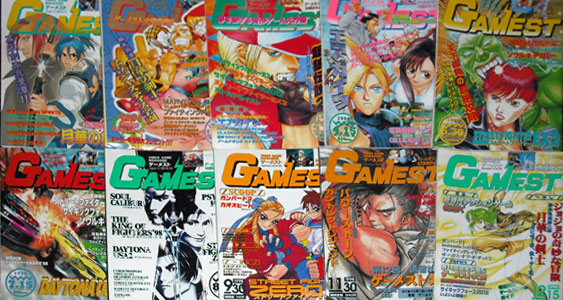
Some of the contributors went on to work at Enterbrain! and Studio Bent Stuff. The core of the Gamest staff founded Arcadia via Enterbrain moments after Gamest closed. Enterbrain was not going to publish a monthly with as much content as the old Gamest. The market couldn't support it. The new magazine was lean and mean. Publishers were responsible for paying for supplements and posters. There were no manga titles published in the middle of the magazine and the goods section was limited to promotional prizes by the publishers plus any new books by Enterbrain. Interviews and features were spread across the board. Fighting games did not dominate the covers. Rhythm-games, racers, sims, robot, SHUMP and card titles all had equal billing.

The magazine even went through a few facelifts in the past decade. Originally it was read right-to-left like traditional Japanese magazines, with the front cover on what we consider to be the back. In 96 they changed the format to western and went left to right with the cover where Americans would expect it to be. Unfortunately the cover font was switched to Japanese. In June 2009 the layout changed once more and the English title returned to the cover.

Arcadia will probably never recapture the glory days of Gamest but that is not the purpose. It has to survive during these times and show the world that the arcade scene is still alive and well. On occasions we get glimpses of those old days. Arcade legends like Capcom, Namco, Konami and Sega still find the time to send new years cards to the magazine. Covers featuring exclusive art, a detailed booklet, an amazing poster and now even DVD previews. Enterbrain recently printed a tee shirt that read Gamest Generation, in kanji it reads "Find Out For Yourself." The purpose of this blog is to let you know just that. Subscribers of Arcadia know that the legacy is closer to 20 years in history. Even though the overall page count is down from Gamest, the quality of the content has never been higher.

While scanning content for this blog I was also helping a young man in my computer lab with his homework. He was a GameStop employee that lived and breathed videogames. He mentioned that he had never played the original Street Fighter II and that SF IV was selling out in his store. He didn't understand why it was so popular, or why it was an important series. He noticed the Japanese magazines I was scanning in and wondered what Gamest was all about. I told him that the magazines were probably older than him. He got a laugh out of that.

SF II was 17 years old and those that grew up on it were now adults, they had nothing but fond memories of the series and were eager to rekindle those experiences. I explained that the games and magazines were very closely related in the 90's. EGM in the states and Gamest in Japan helped shape the canon of Street Fighter as much as Capcom had. Because of this relationship between the publishers and magazines fans could read about the characters and universe when they weren't playing the games. These stories were published a decade before Udon had gotten the rights for the Street Fighter comic.

He was amazed that I had taken so much care of the magazines and that I was sharing this slice of history with the online crowd. I told him that people in the US should appreciate the contributions of Gamest and Arcadia. Magazines and websites here should strive to create content that lives up to that standard. I know that I will always push to give my work that same level of dedication.

-----------
I'm sure you heard that EGM is returning to print hopefully later this year. This is awesome news for those that grew up on the magazine. I'm happy to hear that the magazine is back, especially that its going back to one of the founders. I'm hoping that they might be looking for new writers, perhaps a genuine fan of fighting games. Not a "fan" in the popular sense of the word, but somebody that likes to play fighters and take them apart as well. A writer that has a pretty good long-term memory of the genre and more importantly, will try to avoid the mistakes in covering their development.
EGM might be considered infallible when it comes to reporting on Street Fighter but they have allowed their own interpretations to color the development of the series. The things they have written, even as an April Fools joke, ended up influencing the actual game. This never sat squarely with me. I felt as if people that didn't really understand all of the nuances for Street Fighter, especially the Japanese origins and influences, were shaping the American perception of the game. That's right, I'm talking about Sushi-X and the rest of the crew. What EGM had done to the history of the franchise was endemic of a larger problem. The timeliness and efficiency of print journalism.

It was the February 1997 issue of EGM that got a multi-page preview of SF III. The observations they made were based on a both a work-in-progress and their assumptions about how the characters played and their origin myth. I wonder if the editors ever called the writers on the assumptions they wrote.

The very first photographs of SF III that EGM published were a few issues prior to their dissection. Back in the November 1996 issue. Interestingly enough it was the only time I had ever been published in EGM, as a letter of the month, questioning whether SF III would be good or not. Even back then I was passionate about the franchise. I had followed the SF III developments in American magazines and had noticed that the gap between what was being published in Japan and the US were still a few months apart. In November of 96 my other favorite US magazine, Next Generation also published a news blurb in their "Arcadia" section. The information seemed mistranslated and incomplete. Worse, it lacked a screenshot.

These gripes might seem inconsequential as most Americans got their first glimpse of SF III in November's EGM. However for those lucky types that visited Japanese bookstores had actually gotten a glimpse and solid information of SF III in September 1996's issue of Famitsu. I was one of those lucky types. I bought the magazine and poured over the solitary screenshot and info on the CPS-3 and Warzard day and night. I took it with me to school to share with the other die-hard SF fans. This single page spread allowed me to question whether Capcom was doing the right thing by staying with 2D before EGM had even published a screenshot.

So why am I mentioning all of this now? Why should what was published 13 years ago matter to someone looking to write for EGM today?
Perhaps because I grew up with a firm appreciation for both American and Japanese magazines. I saw how much hard work it took to make articles memorable month after month. I also learned how much influence these magazines held with both publishers and audiences. I didn't want to see EGM, or any other magazine, fall into the familiar habits of making friends with the publishers first and then writing light previews to ensure future access. By ignoring hard-hitting questions most magazines were doing a disservice to the audiences. They were also ignoring the things that made titles memorable in the first place.
I'm not one for making friends in the industry. I'm also not much for newsy writing and reviews. I am a fan of longer features and believe that gamers deserve to know every side of the story, even if that means having to call the developers on their inconsistencies as much as praising their greatness. Damned if I wouldn't want a chance to prove that in the new EGM.
I have no published material to show Steve Harris or any of the former editors. No way of showing my ability and insight other than a mountain of blogs on 1UP and a smaller list on Capcom-Unity. Would my style even fit within the walls of EGM, where higher-profile writers and editors already have a history with companies like Capcom? Or am I destined for other things?
What do you think?
As always if you would like to sponsor me
please visit my Patreon page and consider donating each month, even as little as $1 would help make better blogs and even podcasts!
